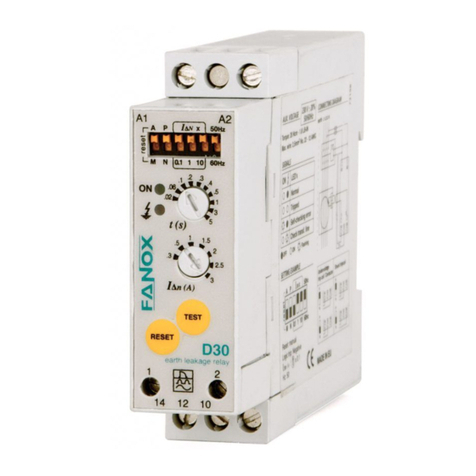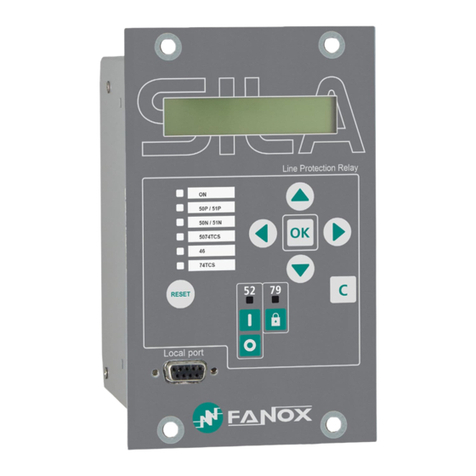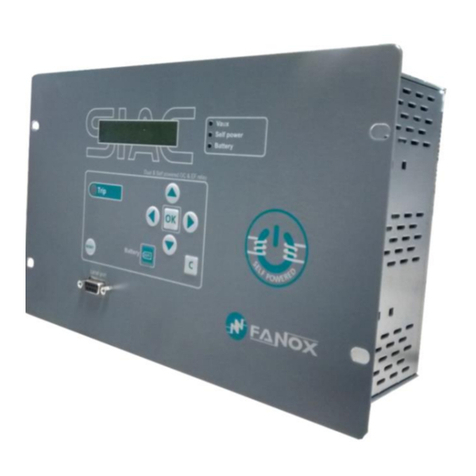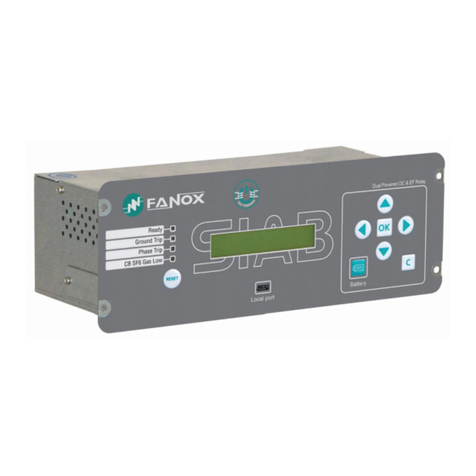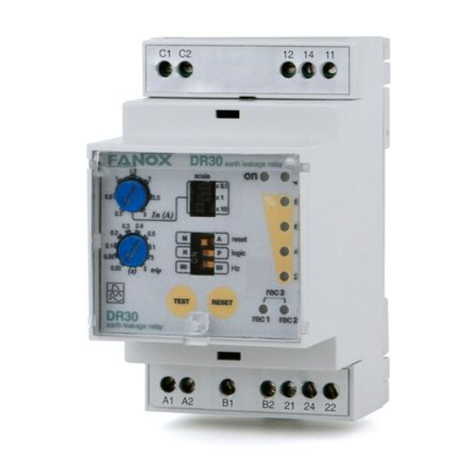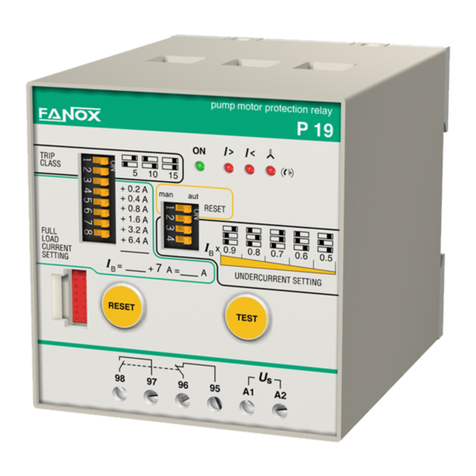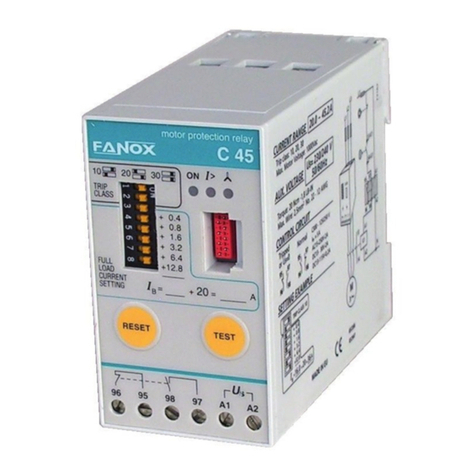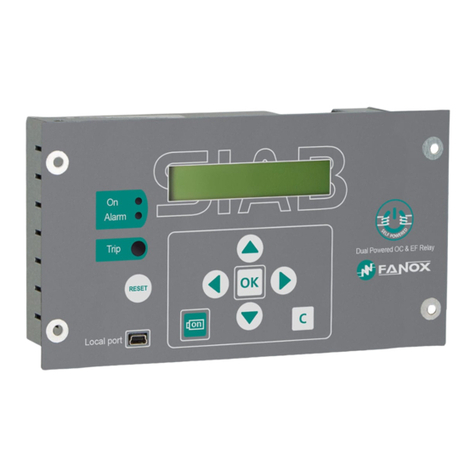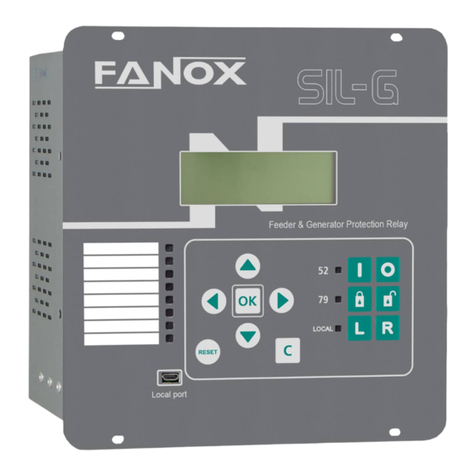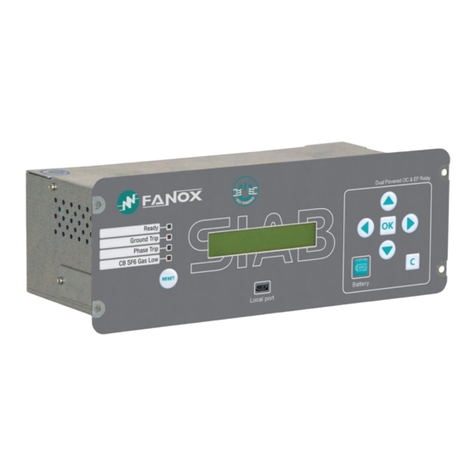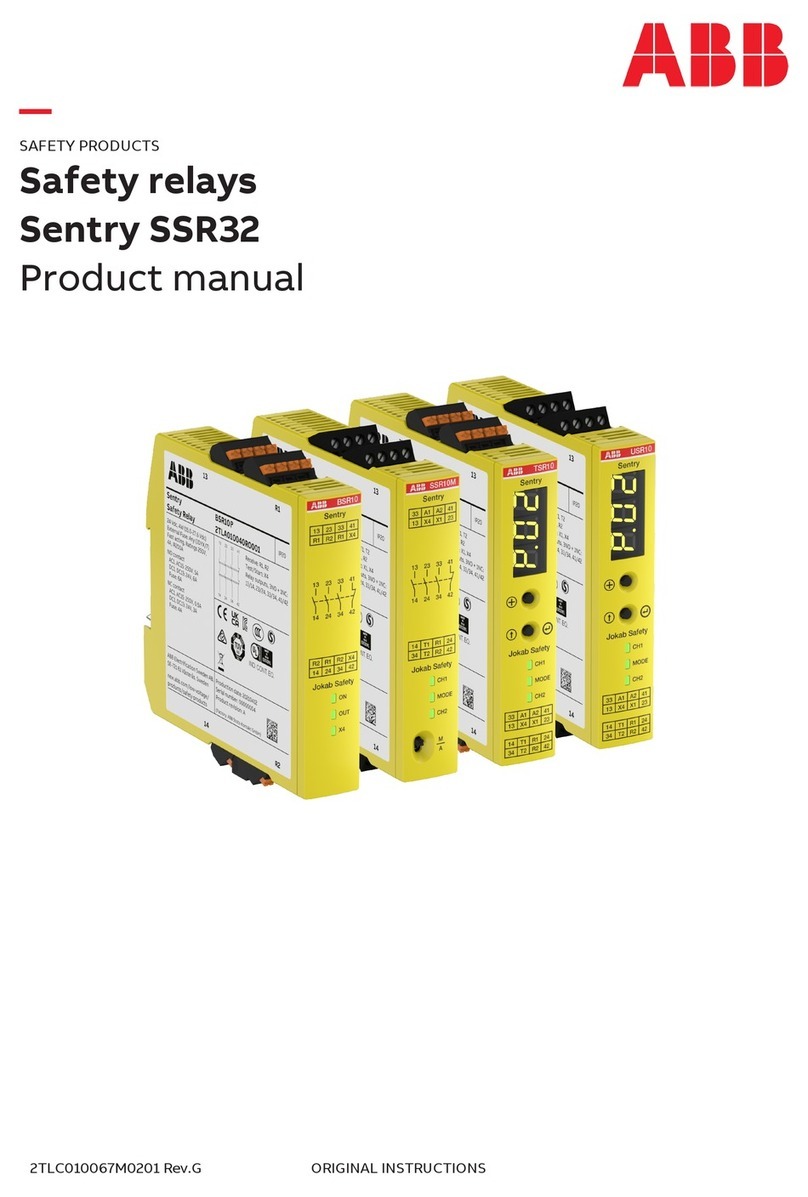www.fanox.com Rev.04 3/112
4.10.2 Thermal overload with memory..............................................................................33
4.10.3 Thermal overload measurement display. Reset. ...................................................33
4.10.4 Thermal protection curves......................................................................................34
4.11 Function 37. Instantaneous phase undercurrent ..................................................35
4.12 Function 52. Circuit Breaker monitoring................................................................35
4.12.1 Circuit Breaker opening and closing commands ..................................................39
4.12.2 ‘Openings Number’ counter. ..................................................................................39
4.12.3 ‘Accumulated amperes: I2t’ counter.......................................................................39
4.12.4 Maximum openings in a time frame .......................................................................39
4.13 Function 79. AC Reclosing device .........................................................................40
4.13.1 Counter to record the number of recloses.............................................................43
4.14 Function 50BF. Circuit Breaker failure...................................................................43
4.15 Function 74TCS. Trip circuit supervision ..............................................................44
4.16 Function CLP. Cold Load Pickup ...........................................................................44
4.17 Function 60CTS. Phase CT Supervision................................................................46
4.18 Function TB. Trip Block protection for switch disconnector................................46
4.19 Function SHB. Second Harmonic Blocking...........................................................47
4.20 Function 68. Zone selection interlocking (ZSI)......................................................47
5GENERAL SETTINGS..............................................................................................51
5.1 Measurements.........................................................................................................51
5.2 DFR..........................................................................................................................51
5.3 LDP..........................................................................................................................52
5.4 General ....................................................................................................................52
5.5 Inputs.......................................................................................................................52
5.6 USB communication ...............................................................................................52
5.7 Rear Serial Communication....................................................................................53
5.7.1 MODBUS RTU..........................................................................................................53
5.7.2 DNP3.0 SERIAL .......................................................................................................53
5.7.3 IEC 60870-5-103.......................................................................................................53
5.8 Rear TCP Communication ......................................................................................54
5.8.1 MODBUS TCP..........................................................................................................54
5.8.2 DNP3.0 TCP .............................................................................................................54
5.8.3 IEC 60870-5-104.......................................................................................................54
5.8.4 IEC 61850.................................................................................................................54
6SETTINGS GROUPS................................................................................................55
7AVALIABLE CURVES..............................................................................................55
7.1 IEC 60255-151 Curves.............................................................................................55
7.2 IEEE Curves ............................................................................................................62
7.3 Application examples .............................................................................................66
8MONITORING AND CONTROL................................................................................69
8.1 Measurements.........................................................................................................69


